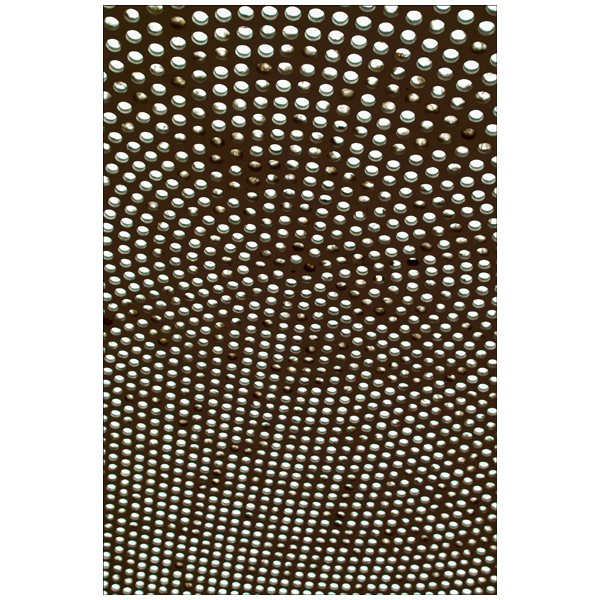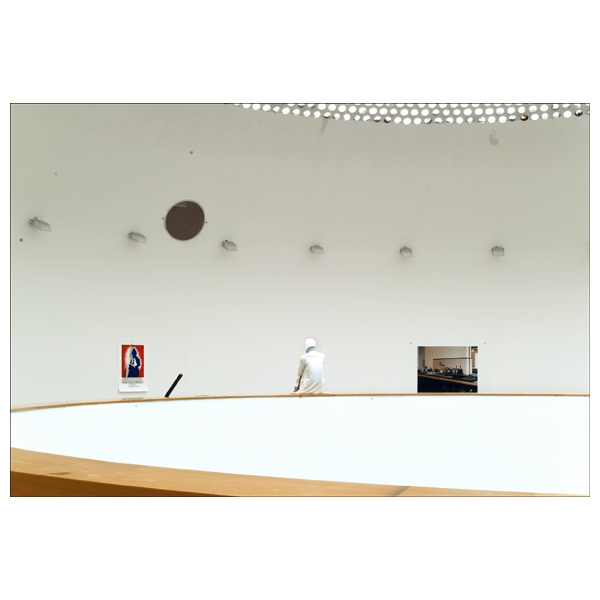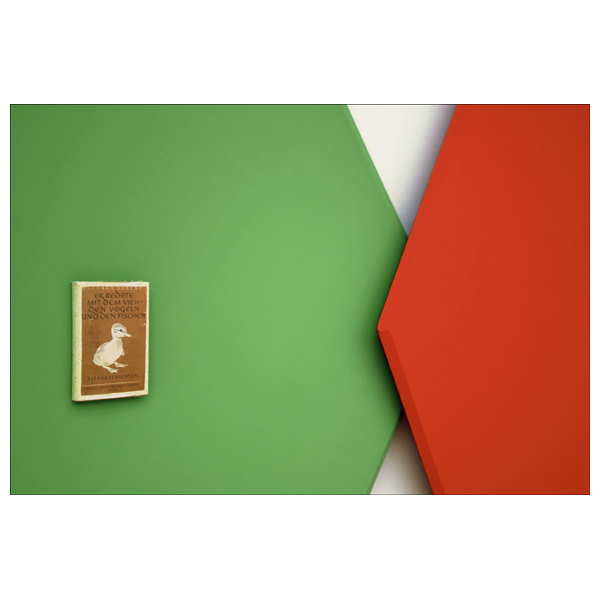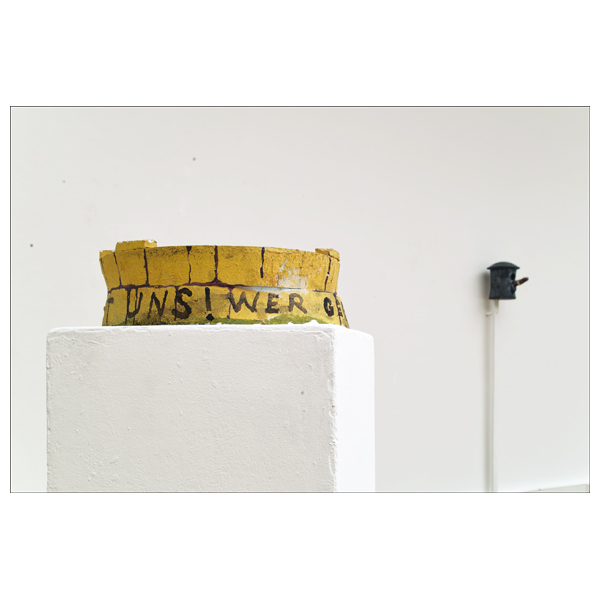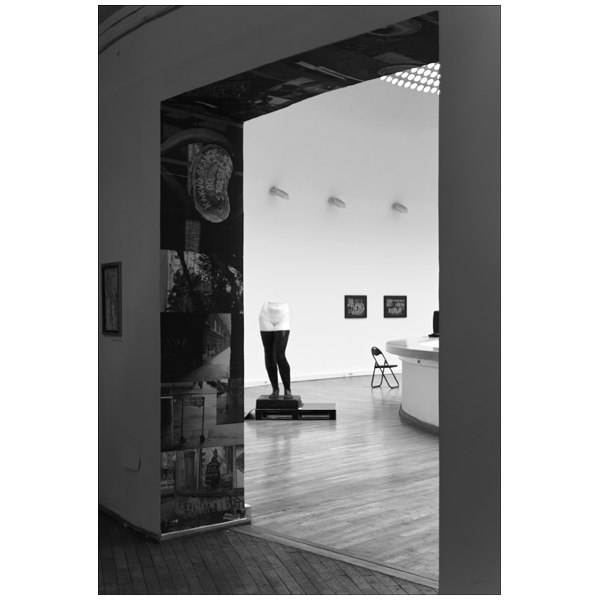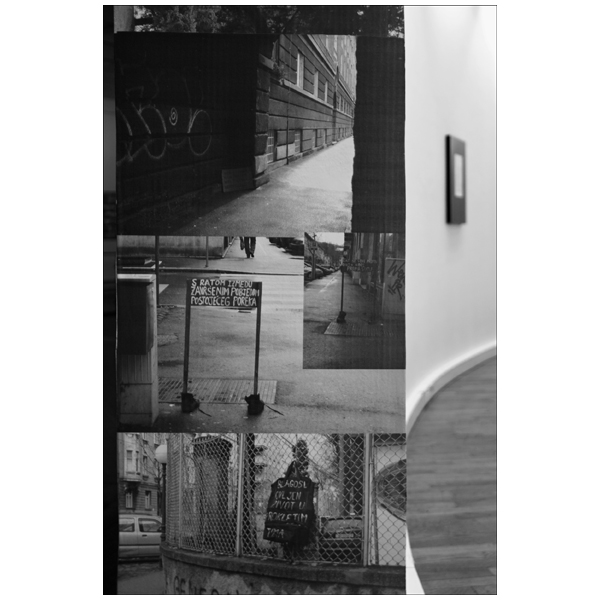- HDLU – Galerija PM, Zagreb
01.12.‒12.12.2012
with Hugo Canoilas (PT/AT), Lucy McKenzie & Beca Lipscombe (Atelier) (GB/BE), Wolfgang Obermair (DE/AT),
Markus Proschek (AT), Ales Pushkin (BY), Tamas St. Turba (HU), Ekaterina Shapiro (RU/AT), Martin Vesely (AT)
Architectural design: Harold Bilinić d.i.a. (1894.-1984.), Lavoslav Horvat d.i.a. (1901.-1989.),
regulation by Zagreb City Department of Buildings, Ivan Zemljak d.i.a. (1893.-1963.)
Construction: 1934. – 1938.
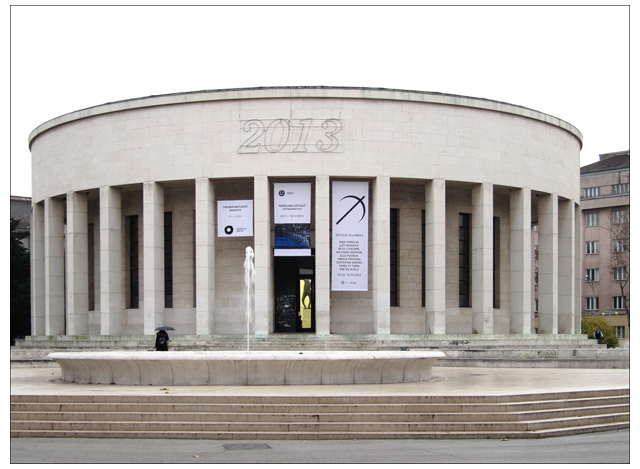
19.11.-10.12.2012
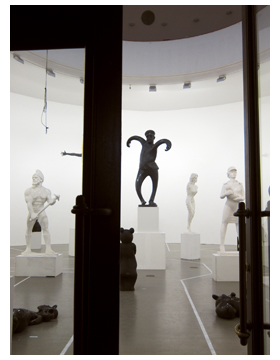
20.11.-10.12.2012
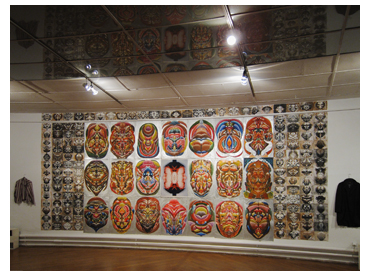
Wolfgang Obermair ,Weapon for a bicycle demonstration‘, 2012
Martin Vesely ,Untitled (Table – Beech, steel, glass)‘, 2011
on the table: Ludwig Kittinger ,Untitled (VIS)’

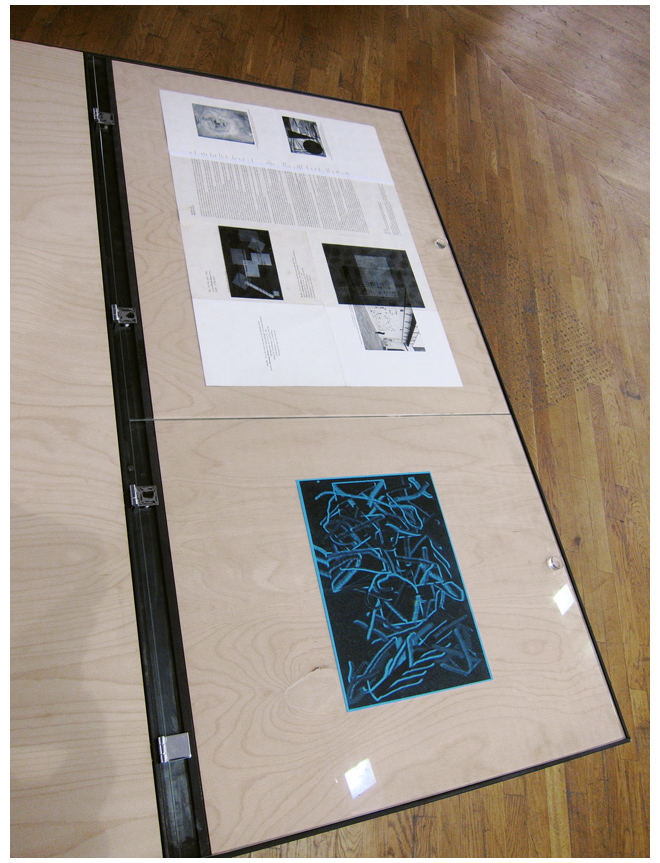
middle: Lucy McKenzie & Beca Lipscombe (Atelier E.B.) right: Martin Vesely, Free Collection Vienna #4, 2012
3.) Wolfgang Obermair, Fixed action patterns, 2012 4.) Tamas St. Turba ,Who is against us, is with us‘, 2009 background: Ales Pushkin, Springlike (Birdhouse), 2010 5.) Hugo Canoilas , Centar, 2012, background: Markus Proschek, Strict Machine, 2011
6.) detail view Hugo Canoilas
- An Alliance of Precarious Relationships
Text: Andreas Spiegl
If this project is a question of “alliances”, then questions of “connections” or “combinations” are implicitly also up for discussion. Who enters into an alliance with whom, who joins up with whom and why? If in addition these questions are posed in the context of art and above all out of the context of art, then they are addressed to art itself: can art enter into alliances, with whom and with what can it connect that would lie outside of itself? Because in order for two or more areas to be able to combine in an alliance not only would these have to be distinguishable in advance, but they would also have to be separable within the framework of the alliance in order not to merge indistinguishably into one another and thereby to lose the alliance in favour of a fusion. In this sense the alliance appeals to an association of entities that were separate before their connection and also integrate this separability into their connection. Alliance means being connected separately and being separable in this connection. This separability, the keeping apart of the allied, also outlines the temporal
horizon of an alliance that orients itself solely on the aim of the connection and loses its meaning as soon as the objective has been reached or another reason appears in its place in order to continue the alliance beyond the initial cause. What seems essential here is the fact that the objective of the alliance always pursues only one particular interest – whether it is defence, attack, the accumulation of its own means or arguments, whatever it may be: the alliance nourishes itself on the particular and always allots the universal to the entity for which this is reserved. If art devotes itself to politics, the economy, the private or the public, to the institution or to everyday cultural life, then there is the option that it takes up these fields and declares them to be part of artistic practice – and then for example understands itself as “political art” or as art that unites the private and the public – or it appeals to the alliance, to the connection with these areas in order nevertheless to remain separate and separable from them. If in this project it is a question of “critical alliances” then the title suggests that art not only enters into particular associations with other areas without completely merging into them but that it also takes a critical view of these alliances themselves. The “critical” element of the alliance can only consist in the fact that the connection with an alliance partner – and be it the alliance of art and the economy – tends to blur the separation and separability of the two areas: whether it is the experience that the alliance between art and the economy leads to the fact that art with its aura of the social and critical is drawn on as a partner simply to legitimise the economy as the alliance partner that finances it and simultaneously uses it as a figure of legitimation. This alliance is critical because it gnaws at the universal colouring of art as an entity, because the particularity of the association not only endangers the identity of the partner but perhaps assimilates it completely, in order then to be left as a socially and culturally committed economy. “Critical alliance”, however, can also mean fundamentally doubting the separation and separability of art from the other alliance partners, even calling into question the idea of the “singularity” of art and its connection with an “outside” of it. Historically this doubt takes up the question of the autonomy of art: Does it have something that is uniquely its own and makes it distinguishable from other connections? Is it just the appeal to the term “art” that distinguishes it from other fields? Does it have a methodology that belongs to it alone and which can be carried over into other fields according to the alliance? Into politics, without becoming politics, into the economy without becoming economic, into everyday life without just becoming routine, into one’s own life without declaring one’s own life to be art? In this sense the “critical alliance” stands for a precarious relationship that art maintains with itself, to itself and the precarious idea of an “outside”. Precarious means that both options are questionable, simultaneously representing an “as well as” and a “neither nor”. This precarious position not only keeps classifications open but openly appeals to contradiction. In this sense the contradiction outlines an aesthetic paradigm that the artistic works involved in the project each specifically follow. Equally supported by knowledge, by hope, by joy and by anger of being “beside oneself”, “going wild”, in order in “being beside oneself” to enter into an alliance with an endangered self, forging a precarious alliance with oneself, for a theme, for a project, for an issue, for an objective. The horizon that is inscribed in the founding of an alliance is the danger, even the fear, of not being able to reach an objective alone and therefore looking out for an alliance. In this sense, the alliance always tells of a horizon of danger, of a horizon of fear, of a potential danger that precedes an alliance. Thus every alliance becomes an indicator of a fear that runs through space and time. However, instead of only encountering the danger in a confederate way, precisely in its association the alliance cannot avoid pointing to the danger, even defining the danger that underlies it. And this is also an aesthetic paradigm of the alliance: producing the danger that it simultaneously seeks to exorcise. Spellbound, one can only look at an “outside” with which one enters into an alliance in order to internalise the danger, even in order to understand the danger as an essential characteristic of one’s self. And in view of the dangers that arise from politics, from the economy, from society and culture, one can actually only go wild and thereby enter into an involuntary alliance with one’s self.
